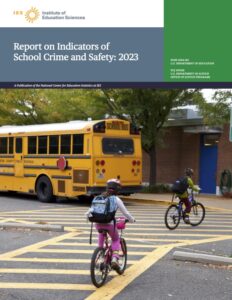 A new report from the Institute of Education Sciences has examined the number of students who were victims of violent crime, nonviolent crime, and bullying at school during the 2021-2022 school year. Although rates of crime and bullying in elementary, secondary, and postsecondary settings have steadily decreased over the past decade, some racial disparities were found among students’ experiences with bullying and harassment.
A new report from the Institute of Education Sciences has examined the number of students who were victims of violent crime, nonviolent crime, and bullying at school during the 2021-2022 school year. Although rates of crime and bullying in elementary, secondary, and postsecondary settings have steadily decreased over the past decade, some racial disparities were found among students’ experiences with bullying and harassment.
Roughly 19 percent of all students aged 12-18 reported experiencing some kind of bullying during the 2021-2022 academic year. Black students were less likely to experience bullying than White students at 17.0 percent and 21.6 percent, respectively. However, it is important to note that students who reported two or more racial identities were the most likely racial group to experience bullying at a rate of 30.1 percent.
Among those who were bullied, Black students (15 percent) were less likely than White students (23 percent) to experience bullying in online settings. However, they were more likely than their White peers to experience physical fights during school at 9 percent and 5 percent, respectively. Furthermore, 5 percent of Black students aged 12-18 reported being afraid of physical harm during school.
Student reports of gang presence, hate speech, and hate-related graffiti in school has steadily decreased over the past decade, but still persist in some settings. During the 2021-2022 school year, roughly 4 percent of all students aged 12-18 reported being called a hate-related word because of their race, with students of two or more races experiencing the highest rates of hate speech at 11 percent.
Since 2011, the share of hate crimes in postsecondary settings fluctuated, peaking in 2016. Of the 667 reported on-campus hate crimes in 2021, 313 were motivated by race. The race-related hate crimes included 160 cases of intimidation, 104 cases of destruction, damage, or vandalism, and 31 cases of physical assault.












Interesting article but lacks who is doing the bullying to whom…..THAT would be information
that drills down the myriad issues in play. Perhaps the U.S. Dept. of Education can illuminate.
Marylou Parthum, former educator
Milwaukee